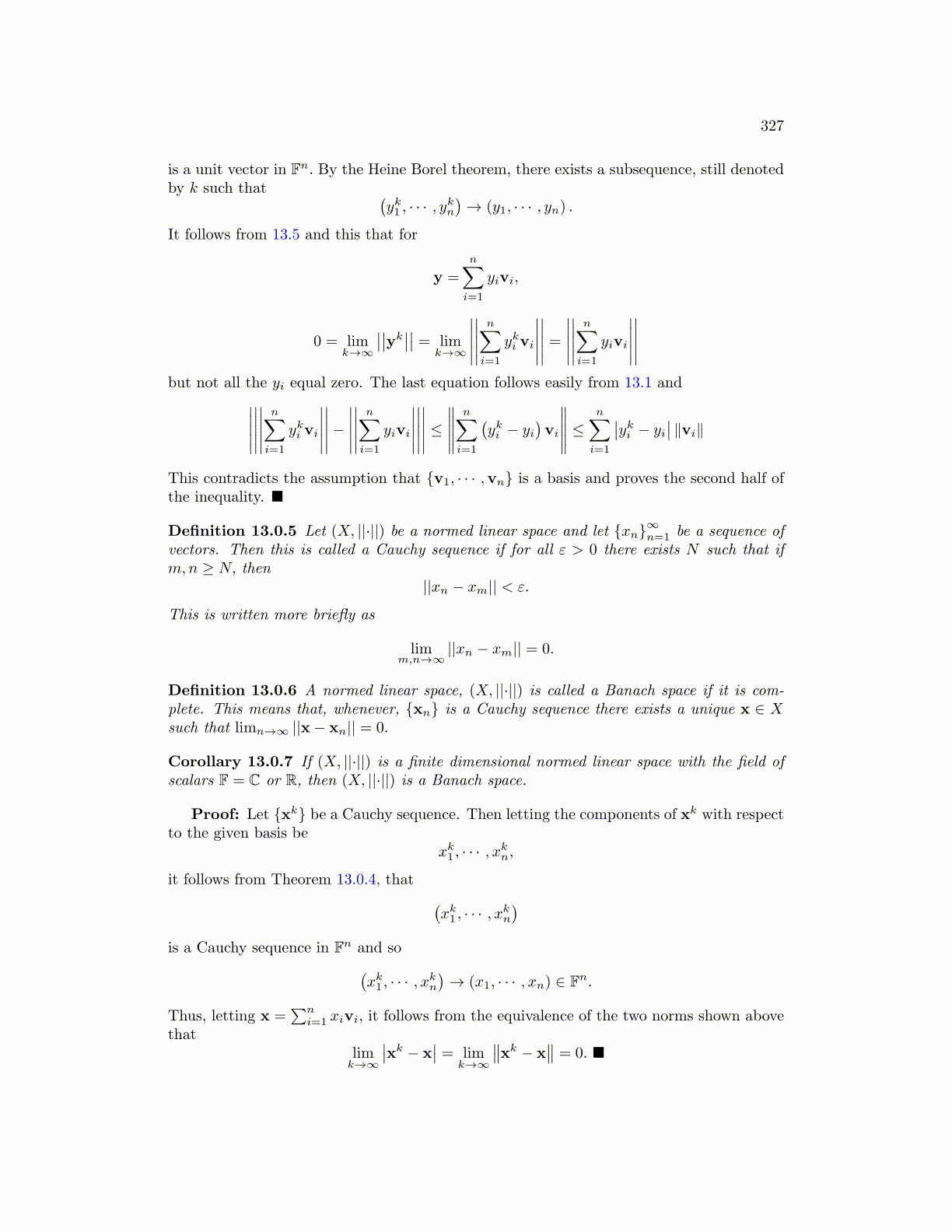
327
is a unit vector in Fn. By the Heine Borel theorem, there exists a subsequence, still denotedby k such that (
yk1 , · · · , ykn)→ (y1, · · · , yn) .
It follows from 13.5 and this that for
y =
n∑i=1
yivi,
0 = limk→∞
∣∣∣∣yk∣∣∣∣ = lim
k→∞
∣∣∣∣∣∣∣∣∣∣
n∑i=1
yki vi
∣∣∣∣∣∣∣∣∣∣ =
∣∣∣∣∣∣∣∣∣∣
n∑i=1
yivi
∣∣∣∣∣∣∣∣∣∣
but not all the yi equal zero. The last equation follows easily from 13.1 and∣∣∣∣∣∣∣∣∣∣∣∣∣∣∣
n∑i=1
yki vi
∣∣∣∣∣∣∣∣∣∣−∣∣∣∣∣∣∣∣∣∣
n∑i=1
yivi
∣∣∣∣∣∣∣∣∣∣∣∣∣∣∣ ≤
∥∥∥∥∥n∑
i=1
(yki − yi
)vi
∥∥∥∥∥ ≤n∑
i=1
∣∣yki − yi∣∣ ∥vi∥
This contradicts the assumption that {v1, · · · ,vn} is a basis and proves the second half ofthe inequality. ■
Definition 13.0.5 Let (X, ||·||) be a normed linear space and let {xn}∞n=1 be a sequence ofvectors. Then this is called a Cauchy sequence if for all ε > 0 there exists N such that ifm,n ≥ N, then
||xn − xm|| < ε.
This is written more briefly as
limm,n→∞
||xn − xm|| = 0.
Definition 13.0.6 A normed linear space, (X, ||·||) is called a Banach space if it is com-plete. This means that, whenever, {xn} is a Cauchy sequence there exists a unique x ∈ Xsuch that limn→∞ ||x− xn|| = 0.
Corollary 13.0.7 If (X, ||·||) is a finite dimensional normed linear space with the field ofscalars F = C or R, then (X, ||·||) is a Banach space.
Proof: Let {xk} be a Cauchy sequence. Then letting the components of xk with respectto the given basis be
xk1 , · · · , xkn,
it follows from Theorem 13.0.4, that (xk1 , · · · , xkn
)is a Cauchy sequence in Fn and so(
xk1 , · · · , xkn)→ (x1, · · · , xn) ∈ Fn.
Thus, letting x =∑n
i=1 xivi, it follows from the equivalence of the two norms shown abovethat
limk→∞
∣∣xk − x∣∣ = lim
k→∞
∥∥xk − x∥∥ = 0. ■